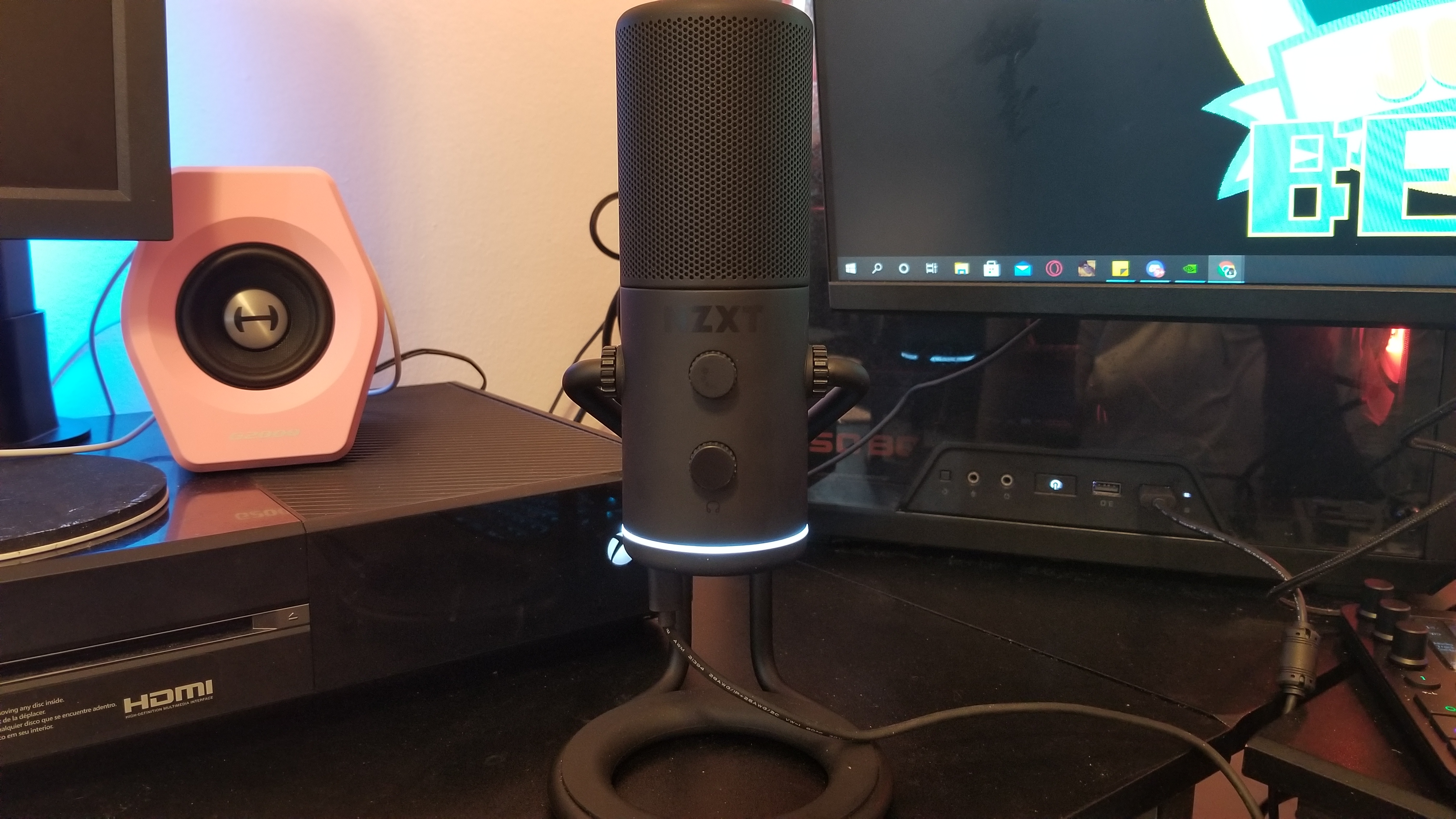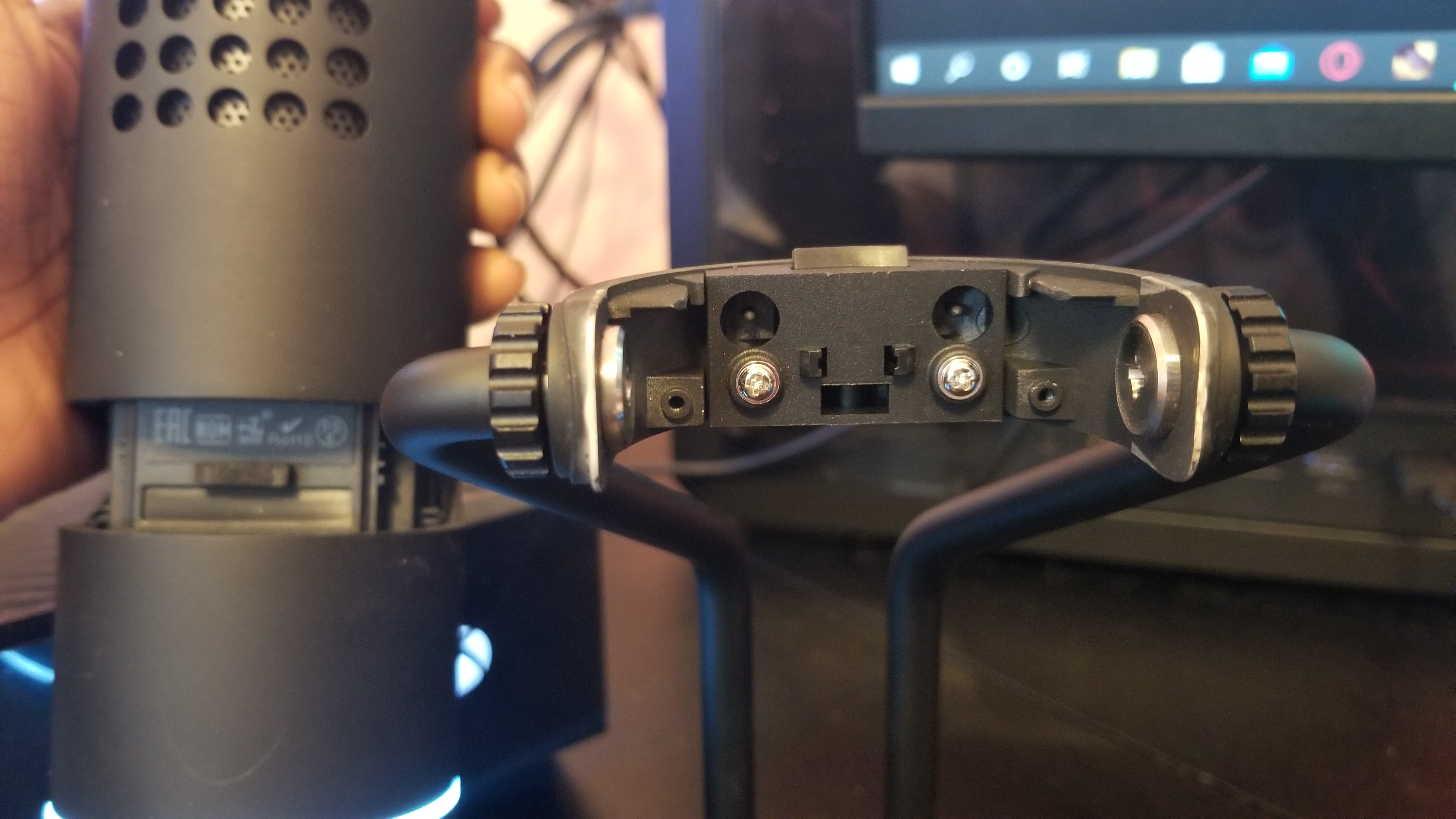Tom's Hardware Verdict
The Capsule is a USB mic made to plug and play built with streamers in mind.
Pros
- +
+ Great audio quality
- +
+ Minimalist style
- +
+ Plug and play
Cons
- -
One pattern
- -
Can’t tweak EQ
Why you can trust Tom's Hardware
Streamers, I think this is it — I think we found the one: an easy-to-use, minimalist mic that isn't super-expensive and provides studio-quality sound. NZXT hasn’t been in the audio or mic game for a few years, and the Capsule is a serious comeback that's built to compete with the best gaming microphones. At $129.99, this mic isn’t as budget-friendly as options like the HyperX SoloCast, but with the option to sit in a stand or a boom arm and a cardioid polar pattern, starter and seasoned streamers alike can enjoy the Capsule.
NZXT Capsule Specs
| Frequency Response | 100 - 20,000 Hz |
| Sample / Bitrate | 24- bit / 96 KHz |
| Polar Patterns | Cardioid |
| Headphone Amplifier Impedance | ≥ 16 Ohms |
| Dimensions (w/ stand, LxWxH) | 115x 131.3 x 252.8 mm |
| w/o stand | 60 x 65.1 x 170.2 mm |
| Weight | 1.94 lbs /883g |
| w/o stand | .64 lbs /314g |
| Warranty | 2 years |
Design of the NZXT Capsule




If you like all black everything, you'll be happy to know that the Capsule comes in a black, or a white colorway. Either option is very minimalist. There are only two buttons and a ring light on the bottom of the mic. The top knob controls the microphone gain, and the bottom knob is the volume button for the headphones.
On the very bottom of the mic there is a USB-C port, a thread to connect to a boom arm and a 3.5 mm headphone jack. The rubber-wrapped cord connects to a USB C-port on the microphone and has USB-A on the other end.
The thread on the bottom of the mic is for an adapter that connects it to a three-eighths inch boom arm or the stand included in the box. The microphone gain button has five circles ascending small to big — because this version is black it is harder to see the circles. It’s the same for the volume button, the glossy black notches are hard to see except when they catch a glimpse of light.
The good news is, no matter which way the mic is facing, whether it’s in a stand sitting on the desk or a boom arm turning the dials clockwise always means more gain and volume. But both buttons infinitely scroll, which isn't the best, and there are no ticks or bumps or other feedback to indicate how far the dials are being turned.
The microphone is encased in a matte finish, and a light circling the mic is embedded in the bottom of the case. The light is a visual indicator for being on a hardware-based mute. It turns red when it’s muted and white when it’s unmuted. Pushing in the volume button mutes and unmutes the mic.
The stand that comes with the mic is weighted. Both together weigh 1.9 pounds, and the mic weighs 0.64 pounds by itself — the stand is heavier than the mic. The stand is connected with two cogs on both sides, which are connected to a strap that nestles into the microphone. Loosening the cogs followed by pressing a button on the back of the strap removes the mic from the stand. The stand isn’t just smooth, well-built, and heavy — there is also a built-in shock mount to minimize the sound if you accidentally bump into your mic.
Get Tom's Hardware's best news and in-depth reviews, straight to your inbox.
Sound Quality on the NZXT Capsule
This is what really matters in NZXT’s newest mic. The company claims it's designed to be simple to use, minimize background noise, and with a cardioid polar pattern.
When I first plugged in this mic, I thought I was being slick while in a Zoom meeting. I started getting a loud screeching sound through my headphones and I had to remain calm on camera while internally freaking out while hosting and recording the call. I can only hope the recording didn’t pick up the screeching. I did some troubleshooting after I got off the Zoom call and I found out that you cannot use this mic with a USB extender because it doesn’t give it enough juice.
I had to switch away from my usual headset, which uses USB Type-C to connect to my computer, as the Capsule provides audio out through a 3.5 mm jack. Having the volume button in close proximity made it easy to adjust the headphones output as necessary.
Testing this mic on Zoom calls while my husband was 25 feet away was a little disappointing. He, like me, works from home, so when he gets loud or excited about something everyone in a Zoom call will know it. I even tried testing the noise gate; I said something and then asked him to say something 2 seconds after I spoke.He was cut off a bit but was still audible — which sucks.
My next experiment happened through Google Meet, I only needed to tweak the gain just a bit. However, that’s annoying because depending on where my meeting is my microphone needs different settings, so I'll always be adjusting. The volume menu bar in Windows automatically turned down and muted itself any time I tried to slide it up to 100.
This mic does best when it's directly near you. A convenient way for enthusiasts may be to have a boom arm. The closer I was to the mic, the more sultry and full my voice sounded. You can’t tell I have high ceilings and the train roaring by all but disappears. If I get too far away from the mic, however, my voice can sound shaky and distorted. When I figured out the perfect setting for the gain I still got a good studio sound when I was less than two feet away from the mic. I didn’t experience my voice dropping nor cutting in and out. Even if I started whispering and trying to give my listeners some impromptu ASMR, everything picked up beautifully. When I was right up on the mic and speaking it sounded like spreading butter on a warm brioche bread roll.
Most importantly, my game stream’s audio is a lot crisper. The audio for my YouTube videos don’t sound like their echoing, clipping, or empty — quite the opposite.
Software on the NZXT Capsule
The issue NZXT set out to solve is the high learning curve of audio software and to minimize error. Although there isn’t software required to use the Capsule don’t think for one second that that minimizes pilot error. Here’s the proof, because there isn’t any software I can't see where the gain is set. Since the buttons don’t have indicators on how far they’re being turned, the only way I can tell is by asking the person on the receiving end or monitoring my levels by plugging in the headphones into the mic. Using different software is going to call for different gain levels.
Many mics like the Razer Seiren Emote come with software to help you view gain and volume. XLR Microphones with interfaces like Focusrite give you a lot more control over gain and volume.
NZXT does not come with any software so any tweaking I need to do happens with the gain button on the mic and in Device Properties in Window 10 audio settings. This is actually how I found my sweet spot. I turned down the mic to 54 percent and turned the gain dial clockwise to turn up the gain get more details in my voice — it’s perfect.
Even with mics that do come with software, I still find I have to adjust Windows settings to get the best quality, so this isn't a deal breaker by any means.
Bottom Line
I really enjoyed using this mic once I started to find the sweet spots with the gain and the volume in Windows 10 settings. I seamlessly transitioned from a Twitch livestream, to a Facebook livestream, to Discord voice chats without having to touch any dials.
The microphone is stylish, whether you prefer a black-and-white or all black look, and the metal stand feels solid. The knobs, however, which spin endlessly without much feedback, weren't on the level.
But if you're a streamer looking for something that's more or less plug-and-play, this is one to keep in mind.

Junae Benne is a freelance writer for Tom's Hardware US. She reviews gaming peripherals and covers streaming tutorials.

